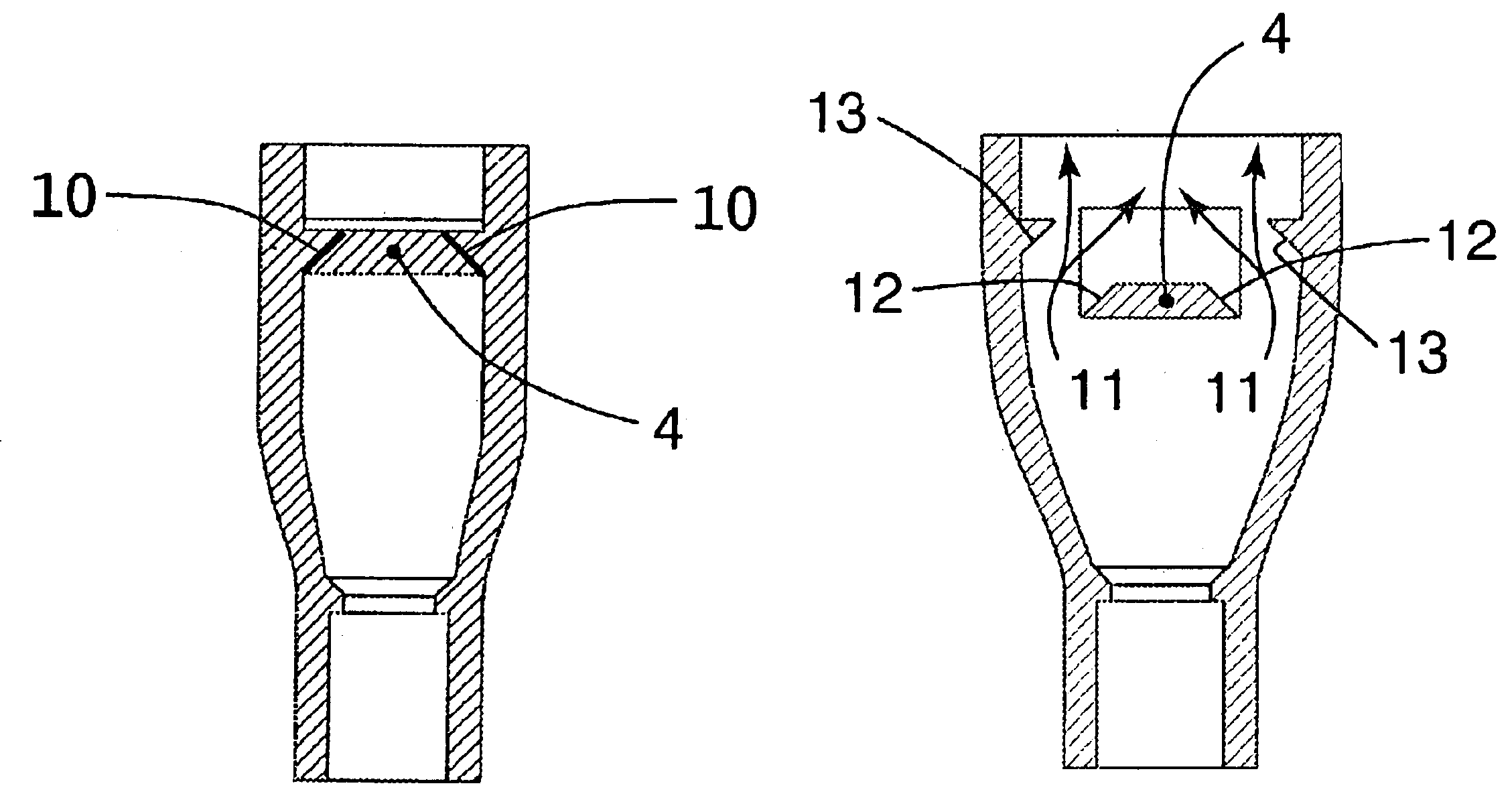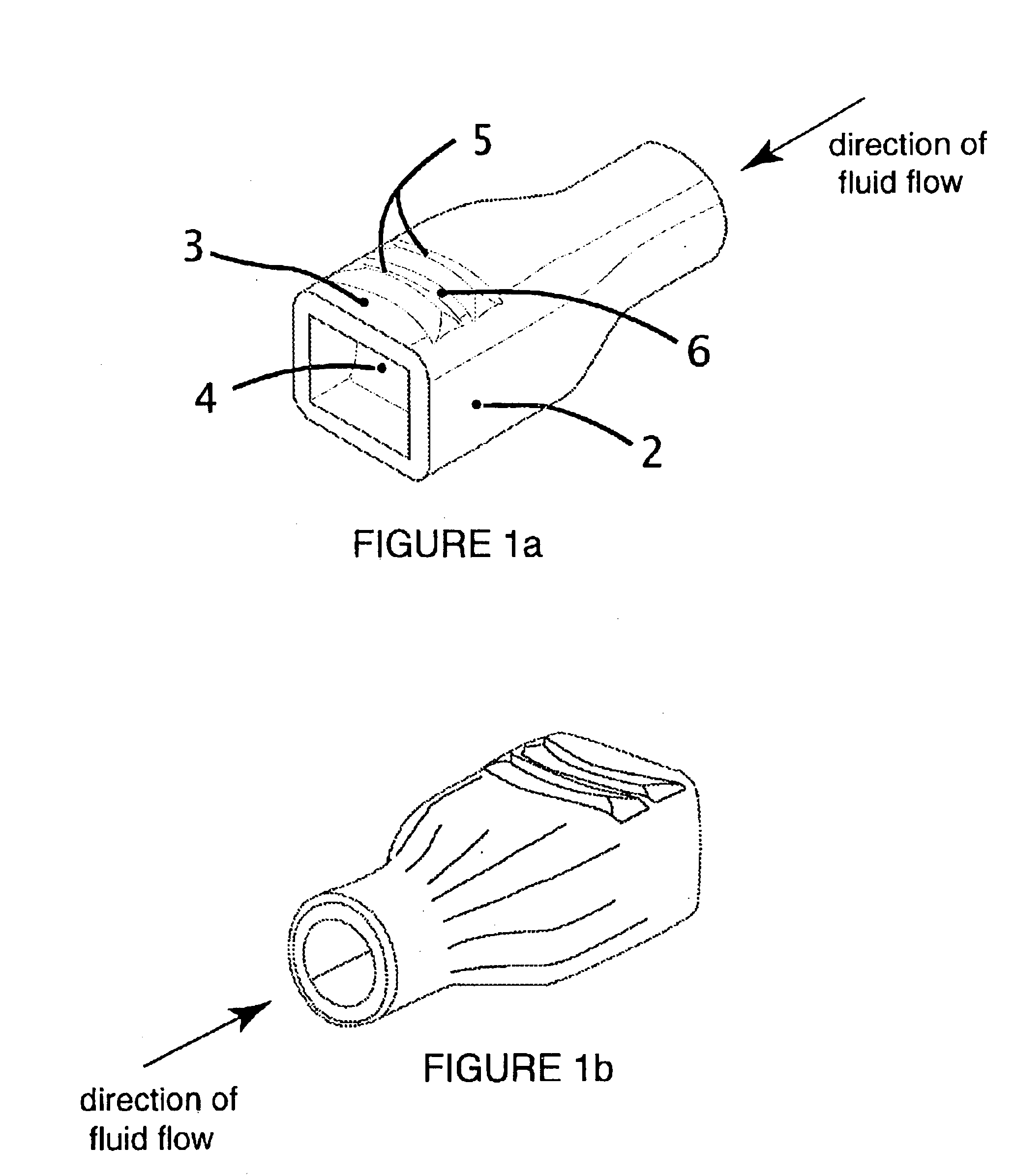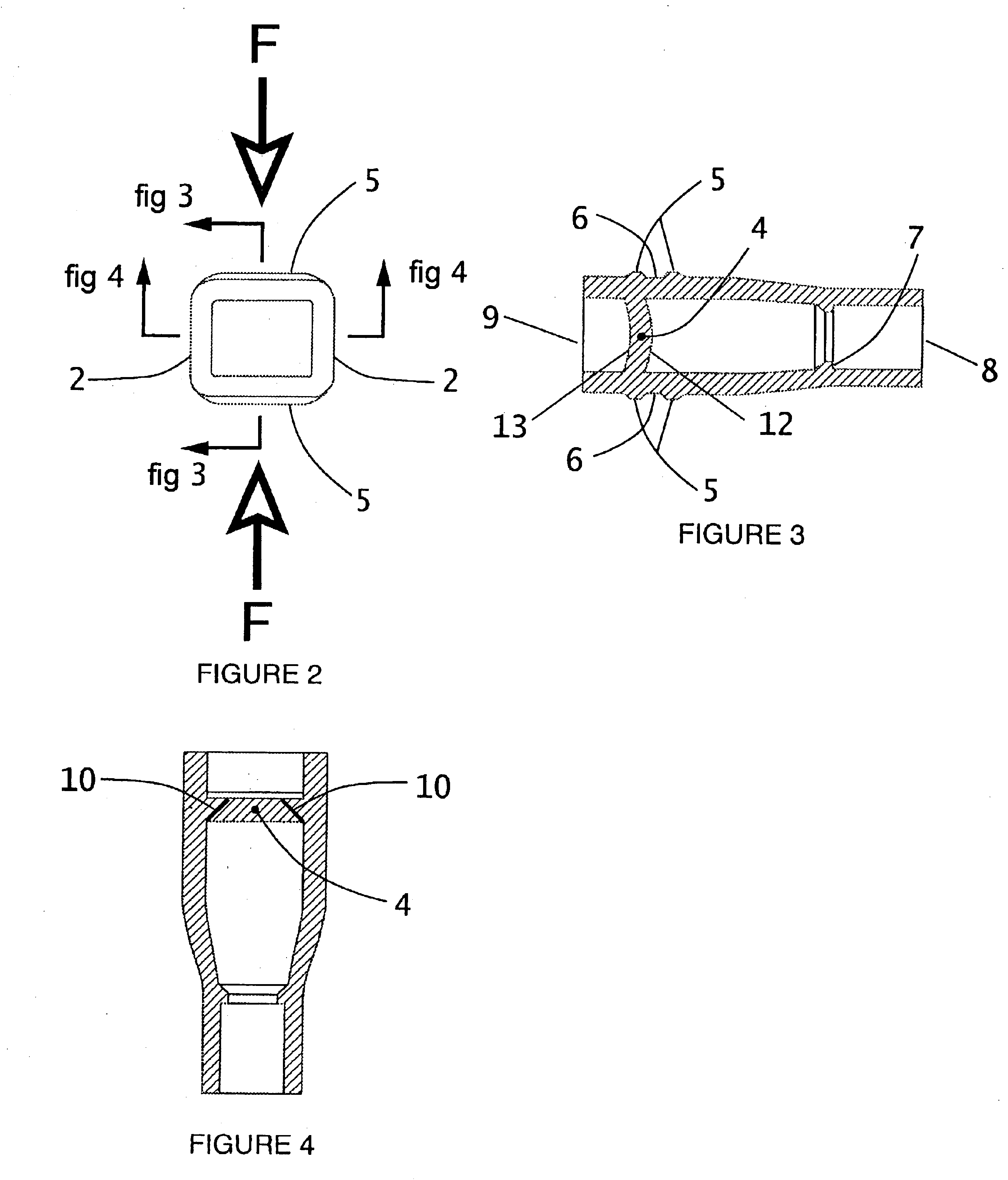Angled-slit bite-valve
a technology of angled slits and valves, which is applied in the direction of valve operating means/release devices, functional valve types, liquid transfer devices, etc., can solve the problems of not optimizing the use of geometry to optimize both the flow rate and sealing capabilities, and the valve can have problems with sealing, etc., to achieve the effect of low cos
- Summary
- Abstract
- Description
- Claims
- Application Information
AI Technical Summary
Benefits of technology
Problems solved by technology
Method used
Image
Examples
Embodiment Construction
FIG. 1 is an isometric view of Bite Valve 1 depicting features Vertical Wall 2, Horizontal Wall 3, Septum 4, Bite Ridges 5, and Bite Groove 6. Applying a force in the direction of the arrows in FIG. 2 results in the formation of Fluid Paths 11 when the Vertical Walls 2 bulge outwardly away from each other while Septum 4 folds on itself (reference FIG. 5, FIG. 6, FIG. 7). Septum 4 is curved in its cross section with the concavity facing towards the Fluid Exit 9 and is slit through at an angle from the external Dry Surface 13 towards internal Wet Surface 12 such that the Septum 4 on the dry / Fluid Exit 9 side is more narrow than the opposite Fluid Entry 8 side. The mechanics of the Angled Slit 10 and the curved profile of Septum 4 compliment each other such that a better seal is formed under positive pressure than when there is no pressure. Fluid pressure acting on the Wet Surface 12 imparts a separating force against the Horizontal Walls 3 that results in a compressive force in the Se...
PUM
 Login to View More
Login to View More Abstract
Description
Claims
Application Information
 Login to View More
Login to View More - R&D
- Intellectual Property
- Life Sciences
- Materials
- Tech Scout
- Unparalleled Data Quality
- Higher Quality Content
- 60% Fewer Hallucinations
Browse by: Latest US Patents, China's latest patents, Technical Efficacy Thesaurus, Application Domain, Technology Topic, Popular Technical Reports.
© 2025 PatSnap. All rights reserved.Legal|Privacy policy|Modern Slavery Act Transparency Statement|Sitemap|About US| Contact US: help@patsnap.com



